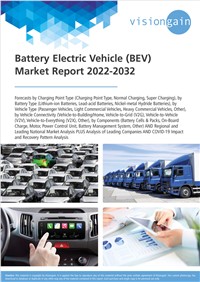The Battery Electric Vehicle (BEV) Market Report 2022-2032: This report will prove invaluable to leading firms striving for new revenue pockets if they wish to better understand the industry and its underlying dynamics. It will be useful for companies that would like to expand into different industries or to expand their existing operations in a new region.
Electric Cars Have Fewer Maintenance Requirements and Lower Maintenance Costs
Spark plugs, gearboxes, radiators, oil and fuel filters, exhausts, and other parts only found in internal combustion engines are mostly absent from all-electric vehicles. As a result, maintaining an electric car is less expensive than one fueled by gasoline. The majority of electric vehicles also include regenerative braking, which largely relies on the electric motor to conduct the brakes. Additionally lowering maintenance costs, this helps electric car braking rotors and pads last longer. Maintenance expenses will be cheaper even if you select a plug-in hybrid electric car with an internal combustion engine. Because PHEV engines operate less often than gasoline-powered engines, they endure less damage and use less oil and coolant.
Battery Cost Is Going to be a Pressing Issue for the EV Buyers
The Li-ion battery in electric vehicles is designed to live for 6-7 years, or just 8 years. After this time, the owner of an electric vehicle is left with no other option than to purchase a new battery, which costs close to 3/4 of the price of the entire vehicle. This fact is no longer a secret. Because electric cars are still a relatively new technology for both the market and consumers, the cost of batteries will be a significant concern for EV owners in the long run.
What Questions Should You Ask before Buying a Market Research Report?
- How is the battery electric vehicle (BEV) market evolving?
- What is driving and restraining the battery electric vehicle (BEV) market?
- How will each battery electric vehicle (BEV) submarket segment grow over the forecast period and how much revenue will these submarkets account for in 2032?
- How will the market shares for each battery electric vehicle (BEV) submarket develop from 2022 to 2032?
- What will be the main driver for the overall market from 2022 to 2032?
- Will leading battery electric vehicle (BEV) markets broadly follow the macroeconomic dynamics, or will individual national markets outperform others?
- How will the market shares of the national markets change by 2032 and which geographical region will lead the market in 2032?
- Who are the leading players and what are their prospects over the forecast period?
- What are the battery electric vehicle (BEV) projects for these leading companies?
- How will the industry evolve during the period between 2020 and 2032? What are the implications of battery electric vehicle (BEV) projects taking place now and over the next 10 years?
- Is there a greater need for product commercialisation to further scale the battery electric vehicle (BEV) market?
- Where is the battery electric vehicle (BEV) market heading and how can you ensure you are at the forefront of the market?
- What are the best investment options for new product and service lines?
- What are the key prospects for moving companies into a new growth path and C-suite?
You need to discover how this will impact the battery electric vehicle (BEV) market today, and over the next 10 years:
- Our 383-page report provides 250 tables and 226 charts/graphs exclusively to you.
- The report highlights key lucrative areas in the industry so you can target them – NOW.
- It contains in-depth analysis of global, regional and national sales and growth.
- It highlights for you the key successful trends, changes and revenue projections made by your competitors.
This report tells you TODAY how the battery electric vehicle (BEV) market will develop in the next 10 years, and in line with the variations in COVID-19 economic recession and bounce. This market is more critical now than at any point over the last 10 years.
The report delivers exclusive COVID-19 variations and economic data specific to your market.
Forecasts to 2032 and other analyses reveal commercial prospects
- In addition to revenue forecasting to 2032, our new study provides you with recent results, growth rates, and market shares.
- You will find original analyses, with business outlooks and developments.
- Discover qualitative analyses (including market dynamics, drivers, opportunities, restraints and challenges), cost structure, impact of rising battery electric vehicle (BEV) prices and recent developments.
This report includes data analysis and invaluable insight into how COVID-19 will affect the industry and your company. Four COVID-19 recovery patterns and their impact, namely, “V”, “L”, “W” and “U” are discussed in this report.
Segments Covered in the Report
Market Segment by Charging Point Type
- Charging Point Type
- Normal Charging
- Super Charging
Market Segment by Battery Type
- Lithium-ion Batteries
- Lead-acid Batteries
- Nickel-metal Hydride Batteries
Market Segment by Vehicle Type
- Passenger Vehicles
- Light Commercial Vehicles
- Heavy Commercial Vehicles
- Other Vehicle Type
Market Segment by Vehicle Connectivity
- Vehicle-to-Building/Home
- Vehicle-to-Grid (V2G)
- Vehicle-to-Vehicle (V2V)
- Vehicle-to-Everything (V2X)
- Other Connectivity
Market Segment by Components
- Battery Cells & Packs
- On-Board Charge
- Motor
- Power Control Unit
- Battery Management System
- Other Components



